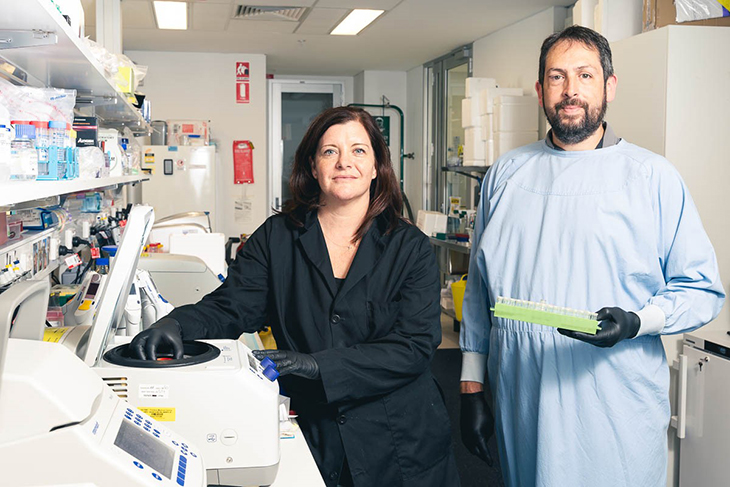Husband And Wife Team Discover Cancer Screening Test That Could Predict Tumors Decades Before They Start Grow

Following the identification of a connection between cancer risk and clusters of chemicals within an individual’s cells, there is a promising development on the horizon: a screening program that has the potential to detect tumors decades in advance.
These chemicals, known as circular RNAs, can lead to the formation of tumors called oncogenes when they adhere to DNA strands in significant quantities. This breakthrough brings optimism about the prospect of creating personalized vaccines for individuals who are more susceptible to cancer.
Lead author, Professor Simon Conn, of Flinders University in Australia, said, “Environmental and genetic factors have long been believed as the major contributors to cancer. We call this revolutionary finding ‘ER3D’ —from endogenous RNA-directed DNA damage’. It ushers in an entirely new area of medical and molecular biology research.”
“[It] opens the door for using these molecules as markers of disease at a very early stage, where the likelihood of curing cancers is much higher,” he adds.
The research involved a comparison of neonatal blood tests, specifically ‘Guthrie cards,’ from babies who later developed acute leukemia during infancy. The study revealed that a specific circular RNA was notably elevated at birth – prior to the manifestation of symptoms – in comparison to peers with healthy blood.
These findings indicate that the abundance of circular RNA molecules plays a pivotal role in determining why certain individuals develop these specific oncogenes while others do not. The research team, consisting of a husband and wife duo, emphasized that gene fusions resulting from circular RNAs tend to occur at well-known mutation ‘hotspots’ in cases of leukemia.
Dr. Conn said, “These specific circular RNAs can bind to DNA at many different locations across a range of cells. By binding to the DNA at specific sites, these circular RNAs cause a number of changes culminating in the breakage of the DNA which the cell must repair in order to survive.”
“This repair is not always perfect and this can result in small mutations, like a misspelled word within a book, or worse, very, very large and devastating mutations.”
In addition, he says that ‘multiple circular RNAs appear to act in partnership causing breaks at multiple sites in the DNA.’
Co-lead author on the paper, Dr. Vanessa Conn, who happens to be Simon’s wife, explains, “This process called chromosomal translocation, is a major problem for the cell as it results in gene fusions which can actually convert the cell from a normal cell into a cancerous cell.”
“This was demonstrated in two different cell types and it was found that this drove the rapid onset of aggressive leukemia,” she adds.
The husband and wife team also share that this is particularly significant for Australia, which currently faces the highest global incidence of leukemia, affecting approximately 35,000 individuals. These gene fusions have long been employed by medical practitioners worldwide to guide treatment decisions, as they are recognized to worsen the prognosis for patients who harbor them.
However, up until now, the origin of these mutations remained a mystery, even though over 100 distinct fusions had been identified in patients.
The researchers’ next endeavor will involve investigating whether these gene fusions are also present in other types of cancers.



